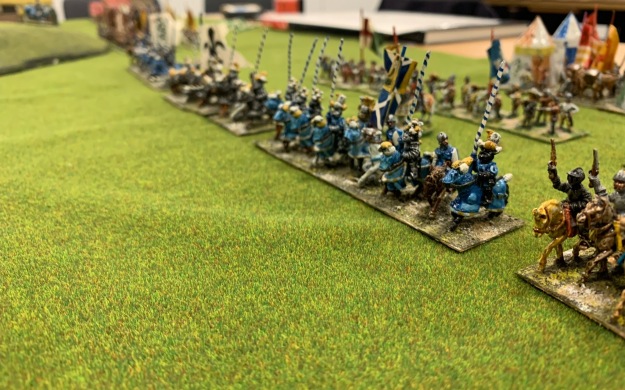This battle took place late in the year. October no less. A time of year when typically armies of the time would be out of the field into winter quarters. In March the French wars of religion had seen the battle of Jarnac in which the Huguenots were defeated. However, the Royalist did not and/or were unable to take advantage of their victory. This gave the huguenots ample time to regroup and rebuild their army. An interesting part of the months leading up to the battles was that the Huguenots were reinforced by several thousands of German reiters and landsknecht. This large body of troops successfully passed through Royalists parts of France, shrugging of forces send to intercept them on more than one occasion and arriving intact at the Huguenot camp. These German mercenary troops also included Willem van Orange and his brother Lodewijk van Nassau. The latter having defeated the Spanish the year before at the battle of Heiligerlee, only to be soundly defeated a few weeks later by the Spanish under the duke of Alva in the battle of Jemmingen, just being able to escape by swimming naked across the Ems river.
The German reinforcements arrived in June in the Huguenot camp. Yet it lasted till October for the armies to meet as neither felt strong enough to risk a battle. Each for all sorts and various reasons. The battle of Montcontour took place on a sandy piece of terrain. The Huguenots were somewhat surprised by the Royalists who were aiming to turn their flank. Just in time they became aware of what was happening and turned and deployed on terrain not fully of their choosing. Then followed this poorly explained hours of waiting before the battle started in earnest. On the Huguenot side it seems the landsknecht went on strike and demanded being paid their outstanding wages. Why the Royalist did not press the attach sooner rather than later is only poorly understood. Perhaps being uncertain on the willingness to fight of the Catholic French noblesse.
Our game was setup as straightforward as the actual battle.
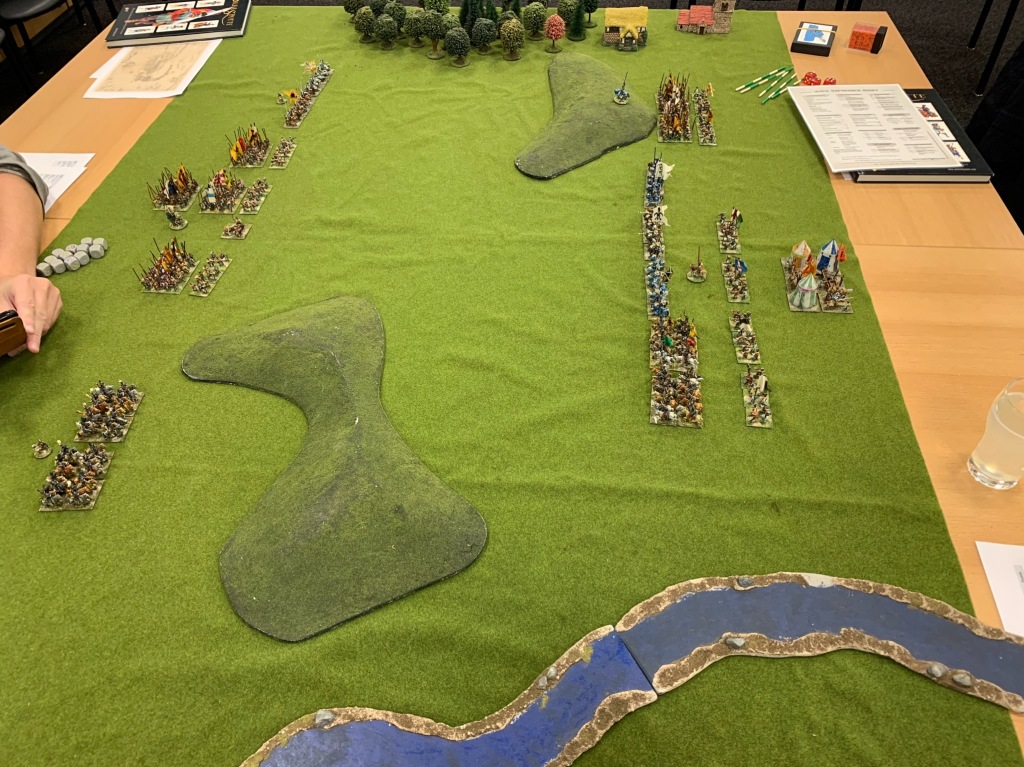
On the Royalist/Catholic side the army consisted of a core-body of Swiss mercenaries and French gendarmes, which was further supplemented with a body of Italian, French and landsknecht infantry, all both pikes and shot, two units of reiters and some artillery. Three commanders were in charge.
The Huguenots had only two commanders, one of which being Lodewijk van Nassau. Willem van Oranje having already left for Germany just before the battle. The truly scary part of the Huguenots were three units of gendarmes. Added to these they had lots of Huguenot units of shot and a body of landsknecht, pikes and shot, and a further two units of reiters.
We decided to not scale down because we were using 15mm. So full inches as per the rules on a 180 x 120 cm table. That proved a good decision, but also one needing some getting used to. Although I here only describe one game, we managed two in an evening and has time left to go and watch at the games of our other friends.
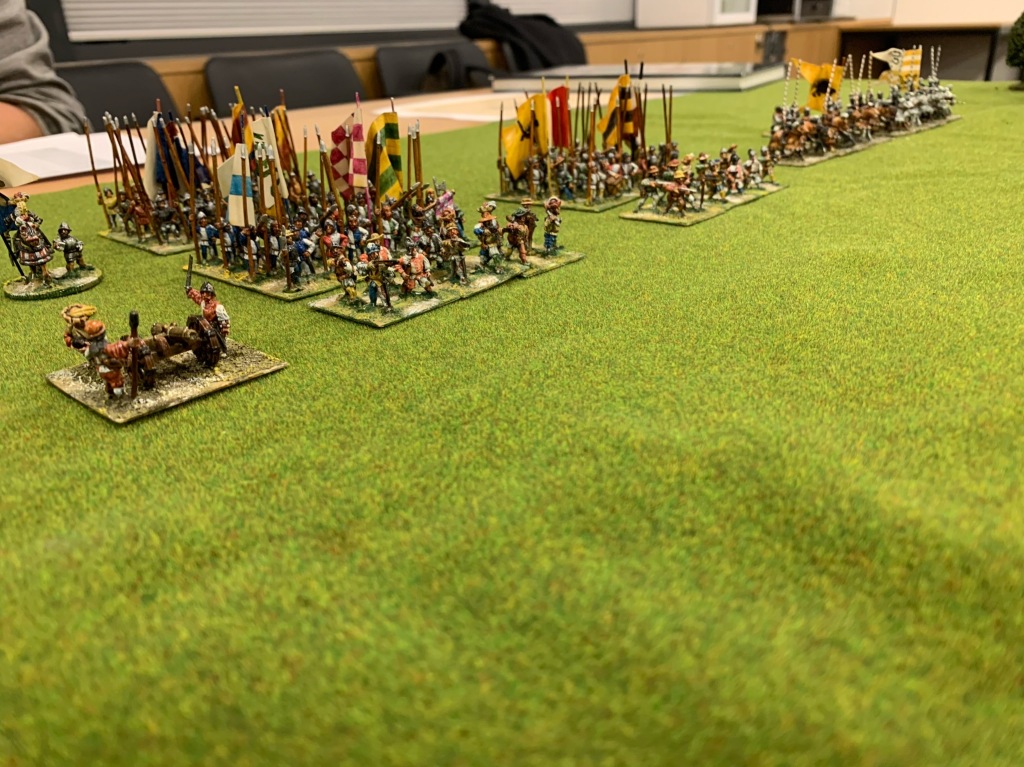
The game also played as straightforward as the real battle. The Royalist started with a somewhat cautious advance. Having artillery while the opposition has none makes one wanting to use it. ineffective as artillery of the time might be. But the Huguenot reiters took some hits and disorders. Seeing this the Huguenots decided to strike first. Two of their units of gendarmes were ordered full speed ahead from their central position toward the Royalist right flank reiters and hit these hard. This they did. And hard too. So hard, however, that all four units ended up being shaken. For the Royalist that immediately posed a problem as the two units of reiters formed one command, and so this was beaten and basically out of the battle.

In hier next move the Royalist payed in kind. Their gendarmes swept forwards towards the Huguenot centre aiming to strike the now exposed shot. Note that, as with the Dutch rebel armies of those years, the French Huguenots had hardly any pike units and most were armed with an arquebus. But strange things may happen. The shot stood their ground. Ending up shaken, yes. But also shaking one of the units of Royalist gendarmes and badly hurting the other.
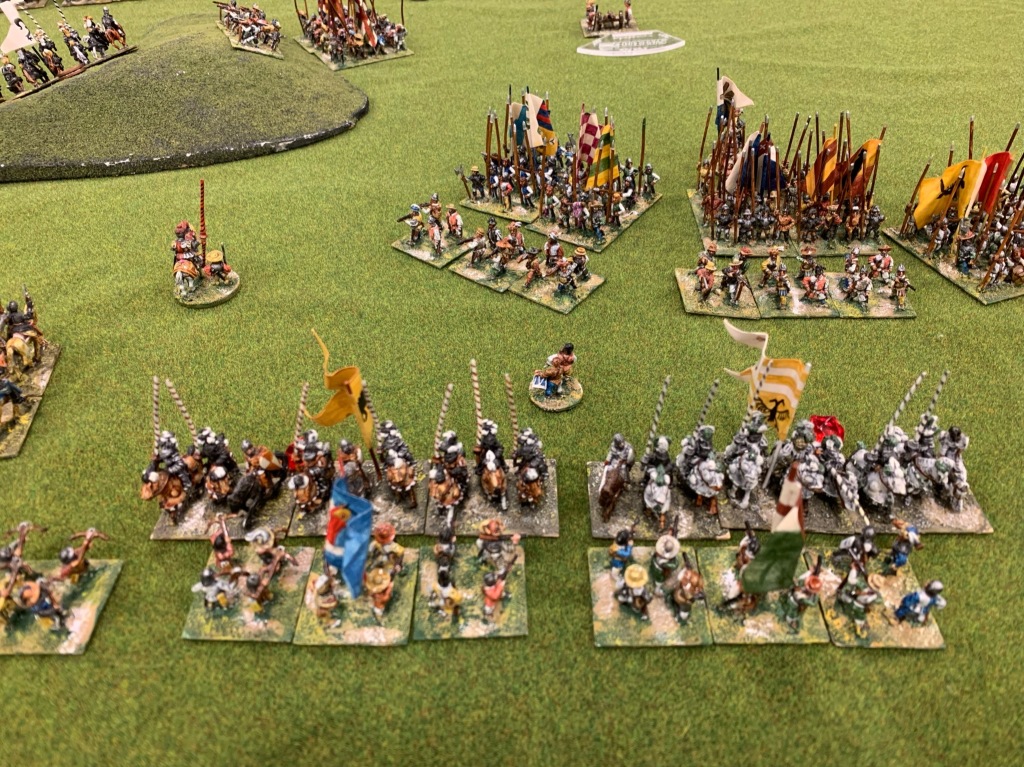
This was now turning into a short, sharp slugging it out match. The Royalist pushed forwards their Swiss and other infantry to just behind the gendarmes. The Huguenot landsknecht advanced and occupied a small hill in front of them. For the Huguenots the situation was simple: just knocking-off one more hit on the second unit of Royalist gendarmes would beat that command and send the whole Royalist army packing. But these chaps have a good morale and disordered/shaken arquebusiers aren’t the best of of shot.
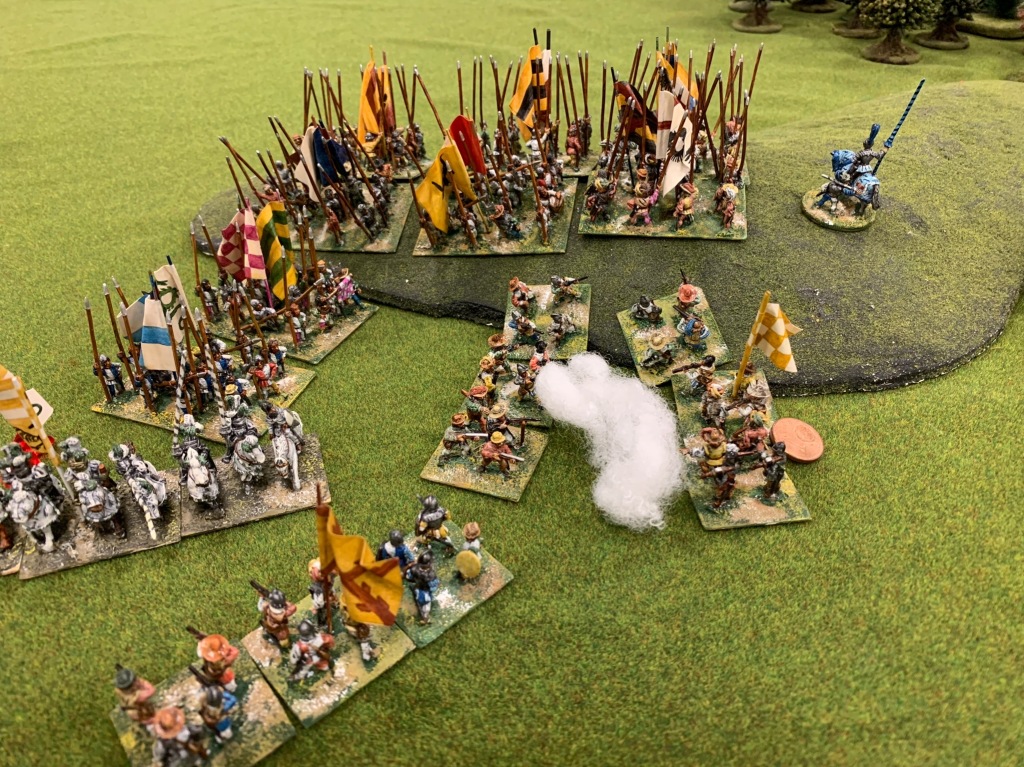
The Royalists face a similar challenge. The large Huguenot command was hurt, but not beaten yet. Their command of landsknecht still fully intact. So the Swiss were hurled into the landsknecht. and the other infantry send to chip away on the other part of the army. Unit hurling itself onto unit with each side looking for the kill. The Swiss and landsknecht clashed twice and hard. Tactically the Swiss had the better of the landsknecht, but received hit on hit as well and so ended up being shaken too. A follow on combat between a unit of Swiss and landsknecht pikes settled the day. This time to the advantage of the Huguenots. The Swiss were victorious, but shaken and that tipped over the command, and thus the Royalist army.
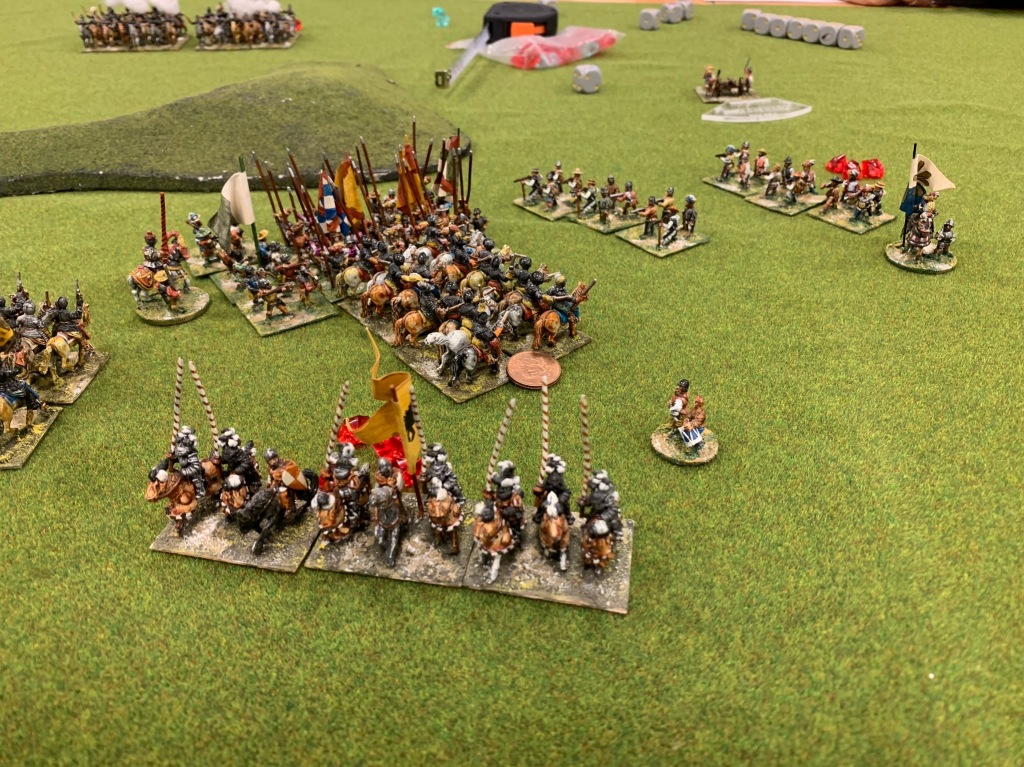
A quick, very quick and hard won battle.
